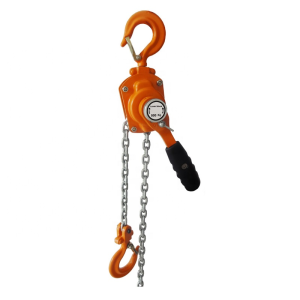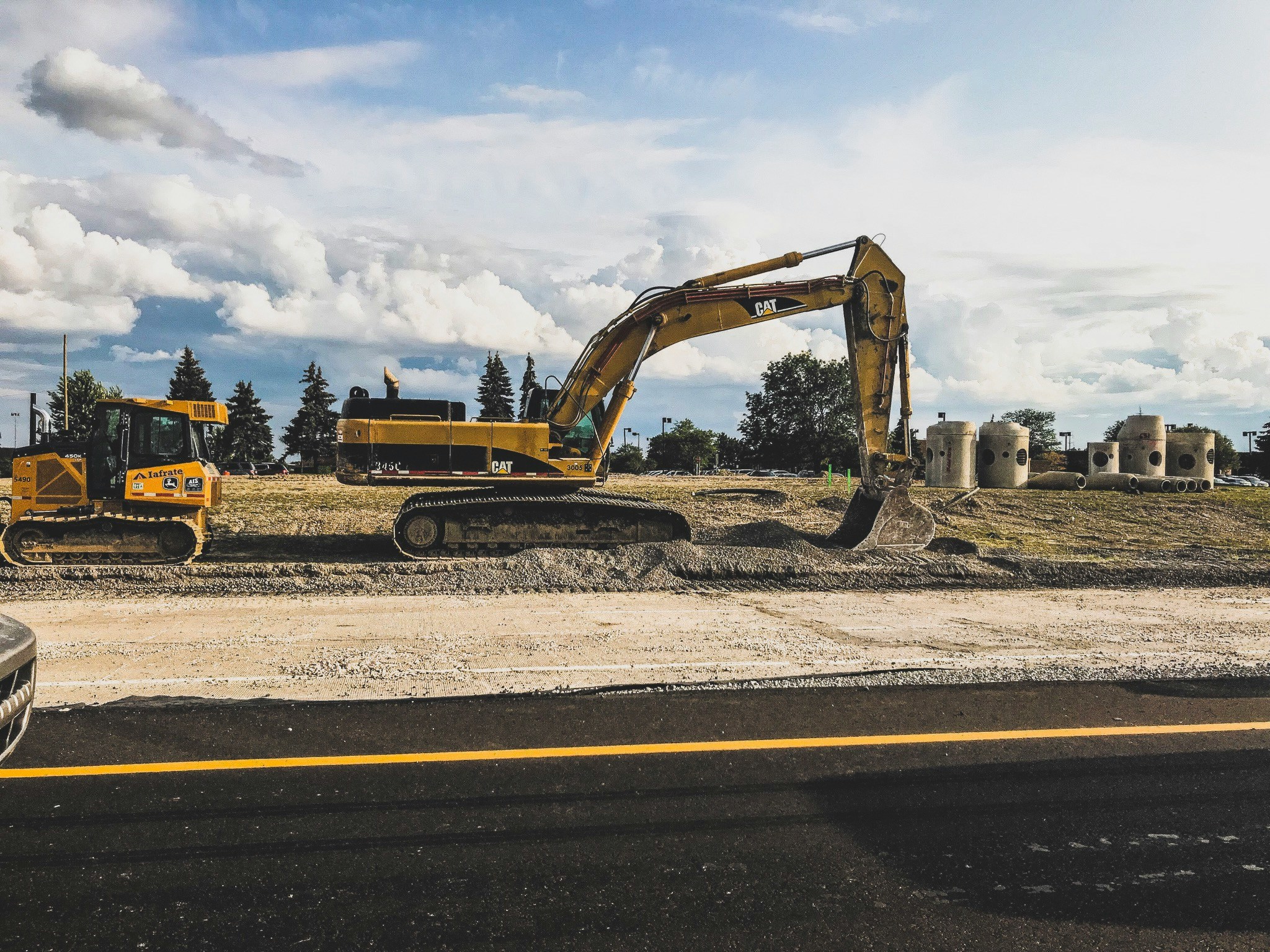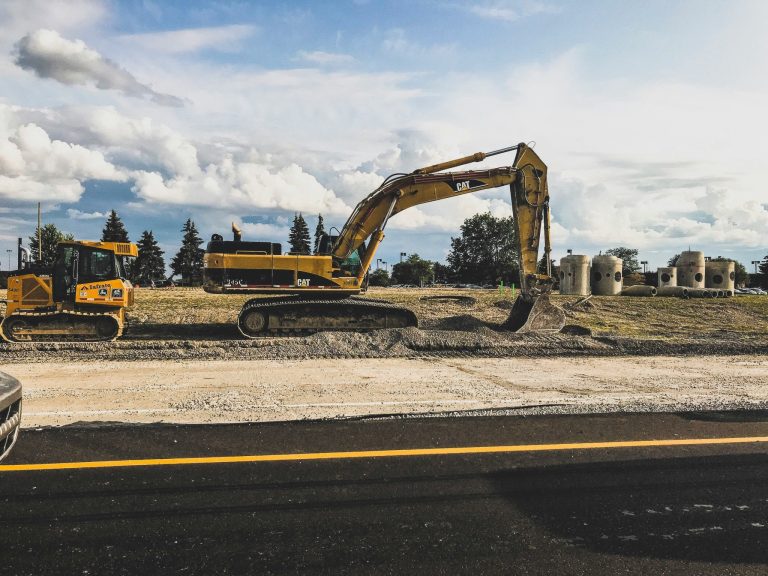Understanding the Basics of a Manual Hoist
Definition of a Manual Hoist
A manual hoist is a mechanical apparatus designed to lift and lower heavy loads with ease and efficiency. It primarily functions through the application of manual force, typically exerted via a lever or a hand wheel. This mechanism allows users to convert a small input force into a significantly larger output force. These devices are widely used across various sectors such as construction, manufacturing, and warehousing because of their straightforward design, robustness, and capacity to manage substantial weights without the need for an electrical power source.
Key Components of a Manual Hoist
The basic structure of a manual hoist includes several key components that work together to perform the lifting operations. The main parts are the lifting chain, the load chain, the hook, the lever or hand wheel, and the internal gear system. The lifting chain is used to pull the load, while the load chain directly bears the weight of the object being lifted. The hook attaches to the load, ensuring it is securely held during movement. The lever or hand wheel is employed by the operator to activate the lifting mechanism, and the internal gear system translates the manual input into a more considerable force, enabling the move.
Hangzhou Apollo Lifting Equipment Co., Ltd. is renowned for its innovative lifting machinery, which is designed to meet international standards. Their products are not only robust and durable but also incorporate advanced technologies that ensure optimal performance. This dedication to excellence makes them a trusted partner for industries that rely on precise and consistent weighing, such as manufacturing, logistics, and construction.
The Working Principle of a Manual Hoist
Lever Mechanism Functionality
The lever mechanism is fundamental to the operation of a Manual Hoist. When the user pulls the lever or rotates the hand wheel, the motion drives the internal gear assembly. These gears are typically positioned in a manner that allows a small amount of manual effort to be amplified into a more substantial force. As a result, the lifting chain moves incrementally, lifting the load gradually and steadily. This mechanism not only provides mechanical advantage but also ensures precision control over the lifting process, reducing the physical effort required by the operator.
Chain Operation and Load Movement
The chain operation in a Manual Hoist is pivotal for the upward and downward movement of the load. Upon activation of the lever, the lifting chain moves through the gear system, causing the load chain to either rise or descend. The interlinking of the chains ensures that the motion remains smooth and consistent, which is critical for handling delicate or precisely positioned loads. The efficiency of the chain system lies in its ability to support a wide range of weights and its inherent robustness, minimizing wear and tear despite heavy usage.
Role of Friction Brakes
Friction brakes are essential for the operation of a manual hoist. These brakes engage automatically when the user stops applying force to the lever or hand wheel. This automatic engagement prevents any unwanted movement of the load, keeping it stable until the operator decides to lift or lower it again. The friction brakes enhance safety by offering a reliable holding mechanism, which is vital for maintaining load stability and avoiding accidents. This feature highlights the manual hoist’s effectiveness for tasks that require precise load handling and positioning.
Overall, understanding the mechanics behind how a manual hoist functions offers valuable insights into its operational reliability and versatility. By appreciating the detailed workings of each component and their interplay, users can better harness the full potential of these indispensable tools in various lifting and moving applications.

Different Types of Manual Hoists
Chain Blocks
Chain blocks, also known as chain hoists, are a prevalent type of Manual Hoist used in various lifting operations. They consist of a hand chain, load chain, and a set of gears enclosed within a housing unit. The hand chain is manually pulled by the operator, causing the internal gears to rotate and lift the load chain. Chain blocks are highly valued for their ability to lift substantial weights with minimal effort, thanks to the mechanical advantage provided by the gear system. Their straightforward design makes them easy to operate, maintain, and transport, making them a popular choice for temporary lifting tasks in settings such as construction sites and workshops.
Lever Hoists
Lever hoists, another type of Manual Hoist, operate somewhat differently from chain blocks. Instead of a hand chain, they utilize a lever or a ratchet system to lift loads. The operator exerts force on the lever, which drives a series of gears that elevate the load chain. Lever hoists are particularly advantageous for tasks requiring precise load positioning, as the lever allows for incremental lifting or lowering. This feature makes them highly effective in environments where space is limited or when working in an angled position. Lever hoists are commonly used in industries like mining, shipping, and transportation, where versatile lifting solutions are necessary to tackle diverse challenges.
Advantages of Using a Manual Hoist
Benefits for Various Industries
The manual hoist provides numerous advantages across various industries, serving as a versatile and dependable lifting solution. One major benefit is its capability to function without an electrical power source, which makes it an ideal option for remote or outdoor locations where electricity might not be available. Moreover, its straightforward design guarantees durability and ease of maintenance, thereby minimizing downtime and operational expenses.
In the construction industry, Manual Hoists are essential tools for lifting heavy materials such as steel beams, concrete blocks, and piping. Their robust construction allows them to handle substantial weights, while the manual operation affords precise control over the lifting process, ensuring safety and efficiency on the job site.
In manufacturing, Manual Hoists facilitate the movement of raw materials and finished products across the assembly line. Their ability to lift and position heavy items with accuracy aids in streamlining production processes and maintaining workflow continuity.
Warehousing and logistics also benefit significantly from the use of Manual Hoists. They are instrumental in loading and unloading goods, especially in areas where forklift access is limited. The ability to lift heavy loads manually helps optimize storage space and improve inventory management.
To conclude, the manual hoist is an essential piece of equipment in various sectors, providing dependability, adaptability, and the ability to improve both operational efficiency and safety. By comprehending the particular demands of each sector, companies can choose the right type of manual hoist to fulfill their lifting needs efficiently.
Safety Guidelines for Operating a Manual Hoist
Pre-Operation Inspection Procedures
Before utilizing a Manual Hoist, it is imperative to conduct a detailed pre-operation inspection to ensure safety and efficiency. Begin by examining the hoist’s external structure for any visible signs of wear, damage, or corrosion. Pay special attention to the lifting and load chains, checking for any deformities or elongation that could indicate weakness. It is crucial to verify that all hooks, latches, and safety catches are intact and functioning correctly. Additionally, make sure that the hoist’s identification tags and working load limit (WLL) markings are legible and adhere to the specifications. This thorough inspection process helps in identifying potential issues that could compromise the hoist’s performance and safety.
Safe Lifting Techniques
Implementing safe lifting techniques is vital when operating a Manual Hoist. First, ensure that the load is evenly distributed and securely attached to the hoist. Avoid lifting loads that exceed the hoist’s rated capacity to prevent mechanical failure and accidents. While hoisting, maintain a steady and controlled motion, avoiding sudden jerks or rapid movements that could destabilize the load. It is also essential to keep the lifting path clear of obstacles and personnel to minimize the risk of injury. Finally, always stand clear of the load’s path and refrain from positioning oneself under a suspended load to ensure personal safety.
Regular Maintenance Practices
Regular maintenance is a cornerstone for the safe and efficient operation of a Manual Hoist. Periodic lubrication of the hoist’s moving parts, such as gears and chains, can significantly reduce wear and extend the equipment’s lifespan. Conducting regular inspections for signs of wear and tear, and promptly addressing any damaged components, is crucial. It is also advisable to keep detailed maintenance records to track the hoist’s condition and any repairs performed. Moreover, testing the friction brakes regularly helps ensure their reliability and effectiveness in holding loads securely. Following these maintenance best practices ensures that the hoist remains in optimal condition and safe to use.

Real-World Applications of Manual Hoists
Industrial Uses
In the industrial sector, manual hoists are essential tools for various heavy lifting tasks. They are commonly used in manufacturing facilities for moving raw materials, assembling parts, and positioning heavy machinery. The mechanical advantage provided by manual hoists makes it easier to handle bulky and heavy items, reducing the intensity of labor. Their capability to operate without electrical power further increases their usefulness in industrial environments, ensuring dependable operation even during power outages or in remote areas. In summary, incorporating manual hoists into industrial processes greatly boosts productivity and operational efficiency.
Construction Site Applications
Construction sites are another primary arena where Manual Hoists play a critical role. They are extensively used to lift and position building materials such as steel beams, concrete slabs, and prefabricated components. The precise control offered by manual hoists is particularly advantageous for delicate tasks such as aligning steel structures or installing roofing materials. Additionally, their portability allows workers to easily relocate the hoists to different areas of the site as required, providing flexibility and convenience. By reducing the reliance on heavy machinery, manual hoists contribute to safer and more efficient construction operations.
Utility in Warehousing and Logistics
Warehousing and logistics operations benefit greatly from the application of Manual Hoists. These devices facilitate the lifting and stacking of goods, optimizing storage space and improving inventory management. Manual hoists are especially useful in tight spaces or areas where forklift access is limited. Their ability to handle substantial weights without electrical power is a significant advantage, ensuring continuous operation even in environments with power restrictions. By enhancing the efficiency of loading and unloading processes, manual hoists help streamline supply chain operations and boost overall productivity.
In conclusion, comprehending the various applications and safety protocols associated with a Manual Hoist empowers users to maximize its potential in diverse fields. By adhering to stringent safety guidelines and leveraging regular maintenance, the reliability and longevity of these indispensable lifting tools can be effectively ensured. From industrial operations to construction sites and warehousing facilities, the Manual Hoist continues to be a versatile and essential asset.
In the ever-evolving landscape of lifting equipment, where each component is crucial in ensuring safety and efficiency, APOLLO‘s Manual Hoist stands as a testament to human ingenuity. It is the silent workhorse, the unseen strength, and the physical assurance of a safe and efficient lift. Each hoist is a meticulously crafted piece of art, designed to lift and lower loads with ease, creating a seamless workflow in any industrial setting.
In the sphere of lifting equipment, where steel and engineering unite in a symphony of strength and control, APOLLO’s Manual Hoists reign supreme. They are the silent partners, the unseen hands guiding every operator towards a safer, more efficient lifting operation. They are the pulse beneath every lift, the heartbeat within every operation.


